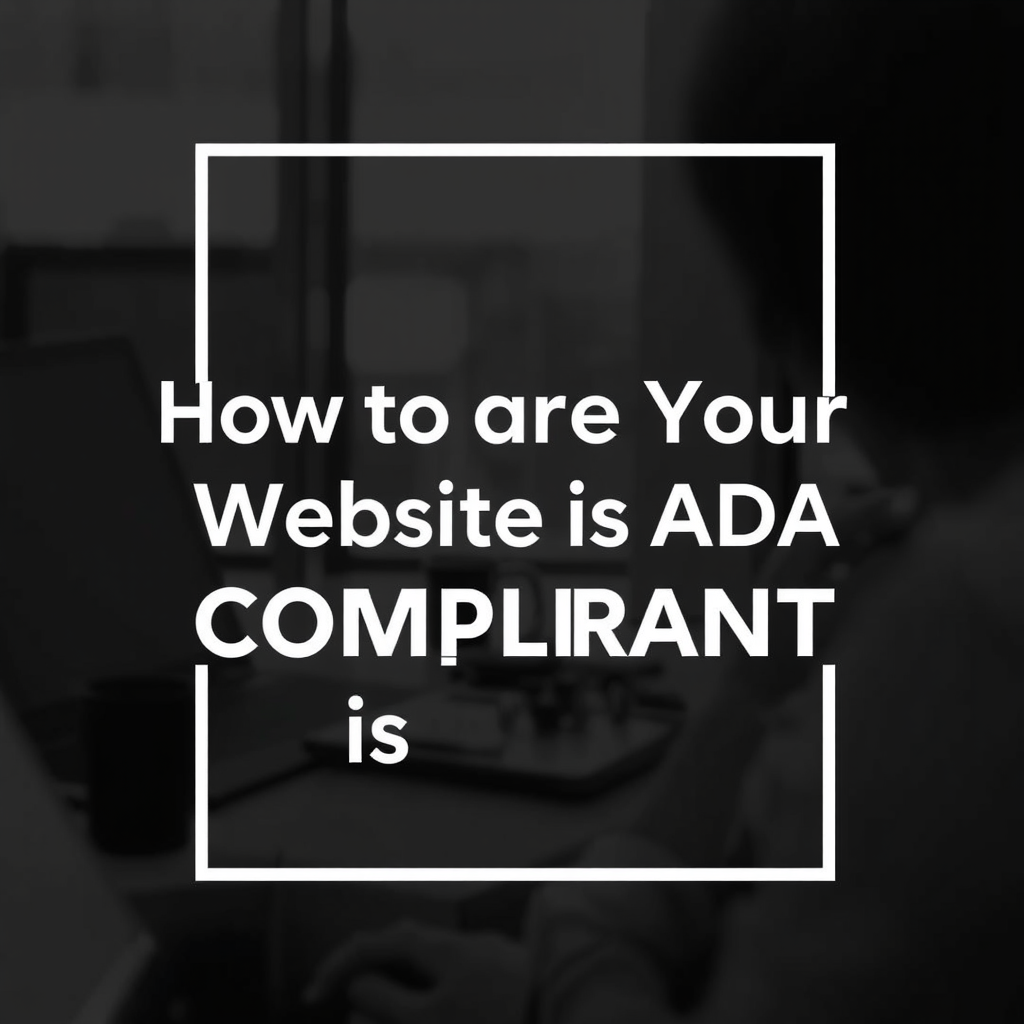
Ensuring Your Website is ADA Compliant: A Comprehensive Guide
In today’s digital age, ensuring your website is accessible to everyone, including individuals with disabilities, is not just ethical but also legally imperative. Adhering to the Americans with Disabilities Act (ADA) standards opens your business to a wider audience, improves user experience, and avoids potential legal repercussions. This comprehensive guide will walk you through the key aspects of ADA compliance and how to make your website accessible.
Table of Contents
- What is ADA Compliance?
- Why ADA Compliance Matters
- Understanding WCAG Guidelines
- How to Achieve ADA Compliance
- Testing and Monitoring
- Useful ADA Compliance Tools
- Frequently Asked Questions (FAQ)
- Ready to Make Your Website Accessible?
What is ADA Compliance?
ADA compliance refers to adhering to the standards set forth in the Americans with Disabilities Act, which prohibits discrimination based on disability. While the ADA doesn’t explicitly outline website accessibility standards, courts have interpreted it to apply to websites that serve as “places of public accommodation.” This means your website should be accessible to individuals with disabilities, allowing them to perceive, understand, navigate, and interact with your site effectively.
Why ADA Compliance Matters
Beyond legal considerations, ADA compliance offers significant benefits:
- Expanded Reach: Accessible websites cater to a broader audience, including individuals with disabilities.
- Improved User Experience: Accessibility enhancements often improve the overall user experience for everyone.
- Enhanced Brand Reputation: Demonstrating a commitment to inclusivity enhances your brand’s reputation.
- Legal Protection: Avoid costly lawsuits and legal penalties.
- SEO Benefits: Many accessibility best practices also improve search engine optimization.
As we at Doterb say, “Digital transformation is not an option, it’s a necessity to stay relevant.” and that absolutely includes accessibility.
Understanding WCAG Guidelines
The Web Content Accessibility Guidelines (WCAG) are the internationally recognized standards for web accessibility. While not legally mandated in the U.S., they are widely considered the benchmark for ADA compliance. Adhering to WCAG guidelines significantly reduces the risk of ADA-related legal issues.
The Four Principles of WCAG
WCAG is built upon four core principles, often remembered by the acronym POUR:
- Perceivable: Information and user interface components must be presentable to users in ways they can perceive.
- Operable: User interface components and navigation must be operable.
- Understandable: Information and the operation of the user interface must be understandable.
- Robust: Content must be robust enough that it can be interpreted reliably by a wide variety of user agents, including assistive technologies.
WCAG Conformance Levels
WCAG has three levels of conformance: A, AA, and AAA. Level A is the most basic level, while Level AAA is the most comprehensive. Most organizations aim for Level AA compliance, as it provides a good balance between accessibility and practicality.
How to Achieve ADA Compliance
Achieving ADA compliance requires a systematic approach. Here are key steps to follow:
Conduct an Accessibility Audit
The first step is to conduct a thorough accessibility audit of your website. This will identify areas where your site falls short of WCAG guidelines. You can use automated tools or manual testing to assess accessibility.
Implement Necessary Changes
Based on the audit findings, implement the necessary changes to address accessibility issues. This may involve code modifications, content updates, and design adjustments.
Optimize Images with Alt Text
Provide descriptive alternative text (alt text) for all images. This allows screen readers to convey the image’s content to visually impaired users.
Ensure Keyboard Navigation
Ensure that all website functions can be accessed using a keyboard. Users who cannot use a mouse rely on keyboard navigation.
Provide Captions and Transcripts for Media
Provide captions for videos and transcripts for audio content. This makes multimedia accessible to users who are deaf or hard of hearing.
Make Content Readable and Understandable
Use clear and concise language, avoid jargon, and provide sufficient contrast between text and background colors. Use heading tags appropriately to structure content.
Maintain Consistent Navigation
Provide a consistent and predictable navigation structure throughout your website. This helps users easily find what they are looking for.
Testing and Monitoring
Accessibility is an ongoing process. Regularly test your website for accessibility issues, especially after updates or new content additions. Use automated tools and manual testing to ensure continued compliance. Consider user testing with individuals with disabilities for valuable feedback.
Useful ADA Compliance Tools
Several tools can assist in evaluating and improving website accessibility. Some popular options include:
- WAVE (Web Accessibility Evaluation Tool): A free online tool for evaluating website accessibility.
- Accessibility Insights: A browser extension for identifying accessibility issues.
- Axe DevTools: A developer tool for automated accessibility testing.
- Tenon.io: A commercial accessibility testing platform.
Frequently Asked Questions (FAQ)
Q: Is ADA compliance legally required for all websites?
A: While the ADA doesn’t explicitly mention websites, courts have interpreted it to apply to websites that serve as places of public accommodation. Therefore, it’s generally considered essential for most businesses.
Q: How often should I test my website for accessibility?
A: It’s recommended to test your website regularly, especially after making updates or adding new content. At a minimum, conduct a comprehensive accessibility audit annually.
Q: What is the difference between WCAG and ADA?
A: The ADA is a U.S. law that prohibits discrimination based on disability. WCAG are internationally recognized guidelines for making web content accessible. While the ADA doesn’t directly specify WCAG, adhering to WCAG is a common practice to meet ADA requirements.
Ready to Make Your Website Accessible?
Ensuring your website is ADA compliant can seem daunting, but it’s a worthwhile investment in inclusivity and user experience. If you need assistance navigating the complexities of ADA compliance and WCAG guidelines, the team at Doterb is here to help. We offer comprehensive website accessibility audits, remediation services, and ongoing support to ensure your website is accessible to everyone. If your business needs an efficient website or digital system that caters to all users, contact the Doterb team today.
